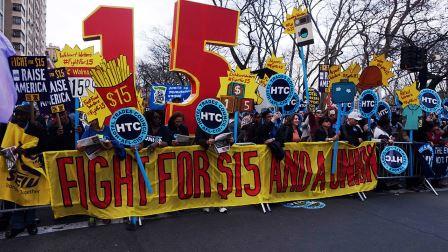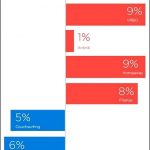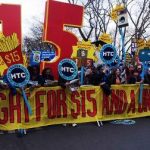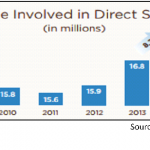Is A $15 National Minimum Wage Actually Feasible?
Just four years ago, few people would have thought it possible.
On November 29, 2012, New York City’s fast food workers took to the streets to demand fair pay. It was the beginning of a movement dubbed “Fight for $15.” The employees earned anywhere from $7.50 to $8.50, which put them below the poverty line. Though the protests received national coverage, many thought such a drastic wage increase to be a pipe dream. And, indeed, according to the New York Times’ coverage of the event four years ago, only “several dozen protestors” were on the streets.
Now things are changing. Earlier this month New York State’s legislature passed a plan that would raise New York City’s minimum wage to $15 an hour by 2018, and have the rest of the state’s minimum hourly wage rise to at least $12.50. Similarly, California passed a new minimum wage bill, which will have the entire state seeing a boost to $15 an hour by 2022.
Of course, New York and California aren’t the most representative of all the other states. For one, both San Francisco and New York City are some of the most expensive cities in the country to live in. Thus, low-paid workers in these locales are in more urgent need of reform. More, both states have been known to pass more progressive laws. California, for instance, is one of the few states that offers state-wide paid family leave for private sector employees, and New York is actively pushing for similar legislation.
Do these momentous changes mean the entire country will follow suit? Experts, advocates, and pundits are divided. At the very least, however, widespread minimum wage reform is on the horizon. What it will take to enact such widespread changes remains to be seen.
Paul Sonn, general counsel at the National Employment Law Project (NELP), which advocates for policies that would impact the U.S.’s low-paid workers, thinks bills like New York’s and California’s are only the beginning. “Since the recession, there’s now a much broader recognition that paychecks for most of the workforce are not keeping up with growth and the cost of living,” he says. Most Americans, adds Soon, are “economically insecure.”
Thus, organizations like NELP have been working for years trying to bring about change. The beginning, says Sonn, were grassroots campaigns like New York’s Fight for $15. But these have spilled over into a national conversation.
Indeed Vermont senator and presidential hopeful Bernie Sanders introduced legislation last year that would implement a national $15-an-hour minimum wage. Now that this issue is hitting the mainstream, experts are debating whether or not the hourly wage boost is both attainable and good for the economy.
Economic Impact
Some economists worry that making the big jump would hurt employers. For example, UC Davis economics professor David Neumark. In a letter written to the Federal Reserve Bank of San Francisco he wrote, “the overall body of recent evidence suggests that the most credible conclusion is a higher minimum wage results in job loss of the least-skilled workers—possibly larger adverse effects than earlier research suggested.”
Additionally, Washington Post columnist Bob Samuelson foresaw an even bleaker future. If a drastic minimum wage increase were enacted, he wrote, “job losses would mount. Some companies would become unprofitable and shrink or close. Others would automate. Some startups would be scrapped.”
Bloomberg columnist and Stonybrook finance professor Noah Smith—who’s delved into the subject more than a few times—sees a bunch of gray area. Enacting a federal minimum wage would create sweeping changes without solid proof of the effect. Instead, he feels incremental reforms—like New York City and California laws—will tell a fuller story about what impact it would have on employers. “When you do these local experiments,” he says, “you get good information about how damaging a federal minimum wage is.”
Others combat this notion. Heather Boushey, the executive director and chief economist at the Washington Center for Equitable Growth—an organization that researches how inequality affects economic growth and stability—says that historically no increase in the minimum wage has led to “significant negative effects on employment.” While naysayers point to potential job losses, she says that empirically this is not the case.
Boushey adds that labor reform in the early 20th century also begot this kind of hysteria. The Fair Labor Standards Act of 1938 not only was the first federal bill to create a minimum wage, but it also outlawed child labor. “Each of those policies had implications for employment,” she says. Sure, taking 12-year-olds out of factories may have caused statistical job loss in the ’30s, but redirecting them toward education led to objectively better conditions.
Does Federal Change Stand A Chance?
While Sonn is heartened by recent moves, he continues to see the fight—as it stands now—as state by state. “The next wave is more states following New York and California,” he says. Two things stand in the way of federal reform: entrenched politics and lobbies. The restaurant industry, for one, has made it clear that by and large it won’t support such drastic changes, as its business model largely rests on employees making income from tips. With a minimum wage hike, some restaurants may have to raise prices.
More, misperceptions seem to cause a great deal of resistance. For one, some believe that the wage hikes would happen in one fell swoop. But as Jared Bernstein of the Center on Budget and Policy Priorities in Washington, D.C. wrote last August, all of the proposals would slowly introduce the wage hike, which would theoretically dampen the supposed blow. For instance, states could implement the changes first in cities with higher costs of living, and then slowly introduce the wage increases elsewhere over time.
Additionally, raising wages would also provide likely provide an overall economic benefit. “We need to tamper all of [this criticism] with the enormous benefits that raising the minimum wage has for workers and their families,” says Boushey. “It creates economic security, it boosts consumption.” Sonn echoes this, pointing to a recent model made by UC Berkeley economists which says that higher minimum wages generate more consumer spending.
Public opinion seems to be swaying toward their side too. According to a recent survey from the nonpartisan Public Religion Research Institute, 59% of all Americans favor a $15/hour minimum wage.
With all of this, people like Sonn and Boushey are optimistic. But the fight for national reform has a ways to go—and it will likely transcend this election cycle. “Income inequality is the central economic issue,” says Sonn. “In the next congress there’s going to be a lot of momentum.”
Fast Company , Read Full Story
(23)













